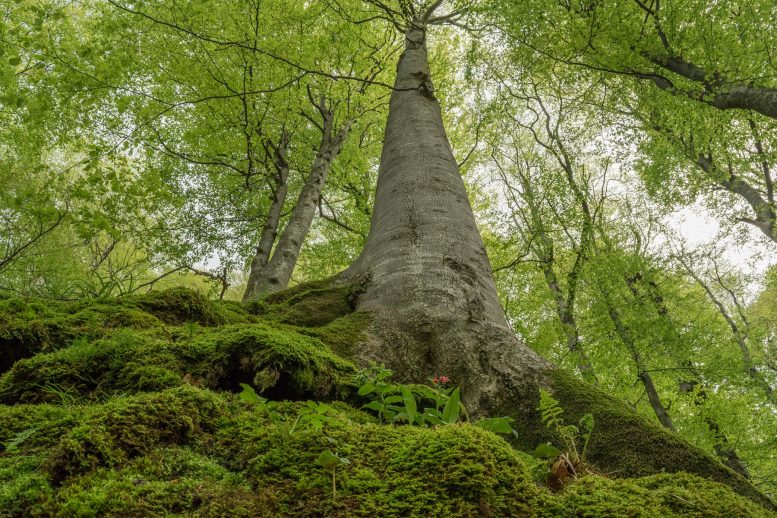
Primary forests are crucial for biodiversity conservation and store high quantities of carbon in biomass, therefore helping to mitigate climate change. Credit: Tzvetan Zlatanov
Europe’s primary forests: What to protect? What to restore?
Primary forests are forests without any signs of past human use and where ecological processes are not disrupted by human influence. These forests are of outstanding ecological value. They are an irreplaceable part of our natural heritage and critical for conserving forest biodiversity. In Europe, where millennia of land use have transformed forested landscapes, very few such primary forests remain, and these are mostly found in remote and relatively unproductive areas.
Even if scarce and irreplaceable, many of these forests are not legally protected and continue to be logged in Europe. The newly released ‘EU Biodiversity Strategy for 2030’ explicitly recognizes the intrinsic value of primary and old-growth forests and the need to protect them. The question is: Which areas should be prioritized?
An international assessment of primary forest status
A research team of scientists from 28 institutions led by Dr. Francesco Sabatini (iDiv; MLU) and Prof Tobias Kuemmerle (HU) has now presented the very first assessment of the conservation status of primary forests in Europe. With the help of a large spatial database on where the last primary forests in Europe are found — a database that took over five years to create — the team was able to tackle three crucial questions: 1) Are the remaining primary forests representative of Europe’s forest types? 2) Where are these forests sufficiently protected? And: Where are so few primary forests left that forest restoration is needed?
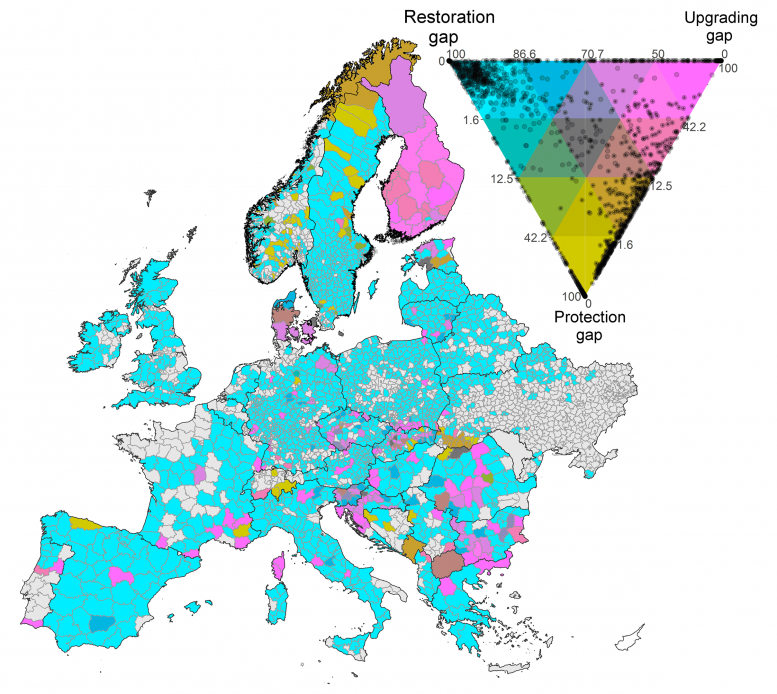
The map shows the distribution of gaps regarding the protection, restoration, and upgrading of primary forests in Europe to fulfill the current protection goals. Credit: Figure taken from the publication https://doi.org/10.1111/ddi.13158
Conservation challenges and opportunities in Europe
“While many primary forests are in fact well protected, we also found many regions where they are not — particularly where primary forests are still common,” said lead author Sabatini. “And in some cases, the level of protection is inadequate to ensure these forests will be conserved in the long term.”
The study also highlights that remaining primary forests are unevenly distributed across Europe. “Some regions, particularly in Scandinavia and Finland as well as Eastern Europe, still have many primary forests. But often those countries do not realize how unique their forests are at the European scale and how important it is to protect them,” explained Prof Tobias Kuemmerle (HU), senior author of the study. “At the same time, we were shocked to see that there are many natural forests in Europe without any remains of primary forest at all, particularly in Western Europe.”
Primary forests in Europe are in a perilous state
Overall, the study shows Europe’s primary forests are in a perilous state and their long-term protection should be a top priority. Where no primary forests are left, forest restoration is the only option. “Restoring forests to resemble and function like primary forests will take a long time, but it is attractive because such forests will not only benefit biodiversity but also store a lot of carbon and, therefore, help mitigate climate change,” said Kuemmerle. “The good news is that there is a wide range of opportunities to restore primary forests even within existing protected areas, which means that restoration efforts would not necessarily require reducing the area of forests used for timber production.”
Expanding Europe’s protected forest areas by 1% is enough
The researchers have calculated that even an expansion of the protected areas by only about 1% would suffice to protect most remaining primary forests in Europe. This corresponds to only two or three-thousandths of the total European land area.
“Now is the time to be ambitious. There is a lot of momentum for forest conservation and restoration in Europe,” said Sabatini, referring to the EU’s recently released ‘Biodiversity Strategy for 2030’. “The new strategy explicitly recognizes the irreplaceable value of primary forests. Our study provides a foundation for putting this strategy into practice.”
Reference: “Protection gaps and restoration opportunities for primary forests in Europe” by Francesco M. Sabatini, William S. Keeton, Marcus Lindner, Miroslav Svoboda, Pieter J. Verkerk, Jürgen Bauhus, Helge Bruelheide, Sabina Burrascano, Nicolas Debaive, Inês Duarte, Matteo Garbarino, Nikolaos Grigoriadis, Fabio Lombardi, Martin Mikoláš, Peter Meyer, Renzo Motta, Gintautas Mozgeris, Leónia Nunes, Péter Ódor, Momchil Panayotov, Alejandro Ruete, Bojan Simovski, Jonas Stillhard, Johan Svensson, Jerzy Szwagrzyk, Olli-Pekka Tikkanen, Kris Vandekerkhove, Roman Volosyanchuk, Tomas Vrska, Tzvetan Zlatanov and Tobias Kuemmerle, 15 September 2020, Diversity and Distributions.
DOI: 10.1111/ddi.13158
The lead author received funding from the European Union’s Horizon 2020 research and innovation program under the Marie Sklodowska-Curie grant agreement No 658876.

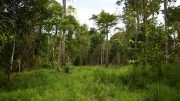

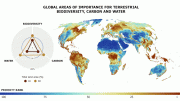

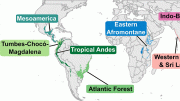

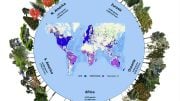
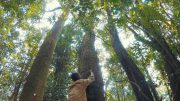
Be the first to comment on "Preserving Outstanding Ecological Value: Assessment of the Protection State of Mostly “Untouched” Forests in Europe"